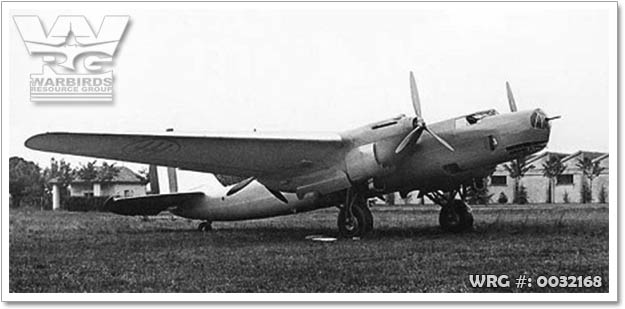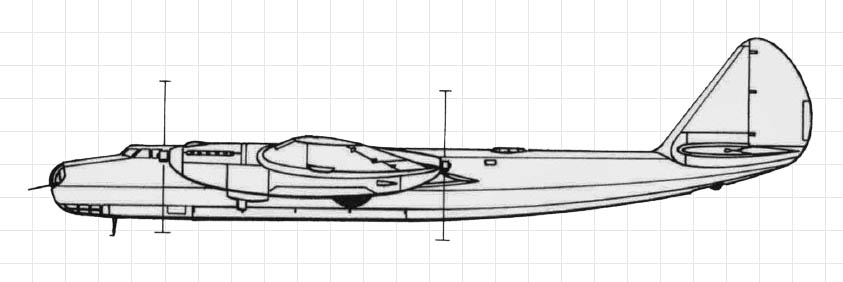REGIA AERONAUTICA ITALIANA > EXPERIMENTAL > PREVIOUS PAGE

One of the P.50-I prototypes.
[Source: Unknown/Public Domain]
The first model, the P.50-I, was a four-engine shoulder-wing monoplane with a single large tailfin and rudder. It was powered by four 544-kilowatt (730-horsepower) Isotta-Fraschini Asso XI.RC V12 engines mounted in tandem pairs on the wings, with each engine driving one three-bladed propeller; two of the propellers were mounted in a pusher and two in a tractor configuration. For defense, the P.50-I had three machine gun positions, including a nose turret.

No production order for the P.50-I materialized.
P.50-II
A new model of the P.50, the P.50-II, appeared in 1938. It was re-engined with four 746-kilowatt (1,001-horsepower) Piaggio P.XI RC.40 radial engines, each driving a three-bladed propeller, dispensing with the tandem-engine, pusher-puller configuration of the P.50-I, instead mounting the engines separately with all four propellers as tractors. Its defensive armament was upgraded to five 12.7-millimeter (0.5-inch) machine guns.

Source:
WikiPedia
REGIA AERONAUTICA ITALIANA > EXPERIMENTAL > PREVIOUS PAGE
